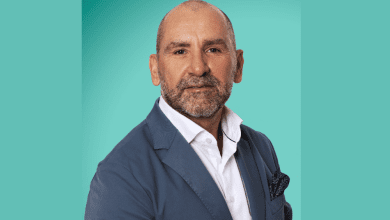Setting foundations to make cat bonds a broadly accepted asset class: Guatteri, SRILIAC – Artemis.bm
Market developments are helping to set the foundations to make catastrophe bonds a much more broadly accepted asset class, according to MariaGiovanna Guatteri, CEO of Swiss Re Insurance-Linked Investment Advisors Corporation (SRILIAC), who feels the asset class remains attractive despite recent tightening.
Speaking with Artemis in March 2024, Guatteri who took on the CEO role at what is the cat bond investment adviser arm of reinsurance firm Swiss Re back in 2022, explained that cat bond spreads are still historically high.
We began by discussing the state of the market and how attractive the cat bond asset class still is, despite the softening of pricing that we’ve seen.
“Although not as attractive as in early 2023, spread levels are still historically high, now at similar levels seen immediately before Hurricane Ian which was already a rate hardening period, signalling that this is still an ongoing attractive time to invest in the market,” Guatteri explained.
Going on to highlight that, “While the recent high volume of maturities coupled with some capital inflows have put pressure on spreads, as new issuance builds up to a larger volume, we should see improved supply and demand balance.”
In fact, Guatteri shared some research her team at Swiss Re Insurance-Linked Investment Advisors Corporation had undertaken, noting, “We estimate that, adjusting for distressed bonds, the cat bond market’s yield to maturity (no-loss scenario and including collateral return) as of end of February 2024 was still around 13%.”
Guatteri believes that catastrophe bond returns are particularly attractive when looked at on a relative basis with other assets that investors could be allocated to.
“Average spread levels in the cat bond market remain well above that of the corresponding credit indices,” she told us. “Furthermore, the asset class has once again proven its low correlation to traditional investments in recent years.”
Most importantly though, Guatteri feels the cat bond market has been primed for a strong period of market expansion, with factors aligning to help drive further catastrophe bond market growth.
She explained, “As mentioned before we believe that we are still in a historically attractive rate environment, and as spreads have tightened in 2023 from their highs, repeat and new sponsors continued to tap into the cat bond market for their risk transfer needs, fueling significant market growth, which ultimately sets a great foundation for making cat bonds a broadly accepted diversifying asset class.”
We moved on to discuss the prospects for cat bond spreads and Guatteri believes there are market dynamics in play that can help to hold up cat bond spreads.
“Whilst there is no certainty on how long such a favorable environment is going to last, what is clear is that there are many factors pointing towards similar supply/demand dynamics as in the nat cat reinsurance market.
“The need for reinsurance protection is driven up by inflation, urbanization and a general fear of climate change consequences, whereas on the other side there is a general environment of reduced risk appetite, smaller balance sheets and tight capital supply,” Guatteri said.
These dynamics further help to set the foundations Guatteri mentioned, with both risk and capital sides pointing to the need for cat bond coverage and the need for cat bond spreads to remain at levels more elevated than where we had seen them fall to in the past.
Guatteri went on to remark on the strong levels of new catastrophe bond issuance being seen this year, which she feels should help in balancing out supply-demand dynamics somewhat.
She gave us the Swiss Re view, “The start of 2024 has already seen new issuance volume surpassing 2023 levels over the same period.
“We anticipate another year of large new issuance volume, similar to last year, as we expect many sponsors to return to the market and new sponsors to continue using the cat bond market as a strategic alternative source of risk capital alongside the traditional reinsurance market.”
Our discussion moved on to the topic of generating alpha, or outperforming, something managers often strive for but that is sometimes not easy in asset classes that have been more constrained, in terms of size.
Guatteri said, “It is quite a common belief amongst allocating investors that passive or “beta” cat bond strategies are preferable. Put another way, that cat bond strategies in general are not suited for a differentiated approach which could result in outperformance of the cat bond market.
“In our view passive or “beta” strategies may fundamentally do a disservice to the positive development of the cat bond market by providing the wrong incentives to sponsors or structuring agents to relax the quality of the deals.”
She went on to explain, “Investment approaches based on differentiated risk selection not only aim to support long-term performance for investors, but also provide natural feedback to steer towards better quality of deal structures and of covered business.
“Active management adds another key component to outperformance coming from the ability to navigate the market cycle and dislocations.”
At Swiss Re and its ILS investment units, such as SRILIAC which has the more cat bond focus, Guatteri said that the use of proprietary models and technology provides the company an edge.
Explaining that, “We highly value third-party cat models, but we also see many added benefits of using proprietary cat models to analyze risk, including transparency into the risk assessment and underlying assumptions, access to the R&D team behind the tools, and a greater flexibility to include the latest knowledge in a changing risk and hazard landscape with frequent recalibration using claims or market data. Moreover, the added level of transparency is a great benefit during or post cat events to help assess their impact to specific deals.”
She also sees Swiss Re’s long history in catastrophe bonds as another benefit that can play into performance.
“Swiss Re has been invested in cat bonds since the onset of this market with a renewed strategic focus and increased allocation since 2016, leading to the launch of an in-house cat bond investment manager in June 2022. Today we manage assets on behalf of Swiss Re and external investors,” she commented.
Finally, on the topic of cyber catastrophe bonds and how attractive an addition these may be to cat bond portfolios at this time, Guatteri recognised the novelty of these in the market still.
Saying, “It’s new and it’s potentially exciting, but we are still in learning mode with relatively small allocations. It is a novelty risk which comes with relatively good economics, but it is still fairly untested, at least for large cyber events, and we are cautious as we learn more about it and the market matures.”
Read all of our interviews with ILS market and reinsurance sector professionals here.




